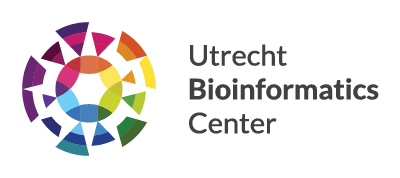Fundamental research concept
“My main weapon of choice is whole genome sequencing, either on isolated bacteria or directly from clinical samples. The latter is often more tricky, as the bioinformatics involved becomes an order of magnitude more difficult, not only because of the sheer volume of data, but also the complexity. Fortunately, the pace of new developments is increasing. To give you an idea about the rate of progress: when I started my PhD research in 2002, I sequenced and analysed a single bacterial strain, which took two years, of which most time was spent on data analysis. But today, sequencing and analysing thousands of isolates takes just a few weeks, at a fraction of the costs.”
The advantages to using bioinformatics in this work are obvious. Aldert continues: “I use and develop bioinformatic tools for analysing sequence data in order to find out where the resistant bacteria come from, what makes them resistant, and whether there has been transmission between animals and humans. I’m also interested in the follow-up: how can we prevent infections with antimicrobial resistant bacteria? I believe that prevention is better than treatment.”
Bacterial Iridescence
Aldert explains that the methods he uses are not limited to looking at pathogenic bacteria. They are also ideally suited to answering fundamental research questions. He gives an example: “Some bacteria can display structural colour like the wings of a butterfly, where the angle of view or the angle of illumination changes the colour observed. The evolutionary significance and benefit is unknown, and we are looking for genetic markers of iridescence. With these markers, we will be able screen environmental metagenomic datasets to figure out where these bacteria are frequently found. The methods used were originally developed to find markers for bacterial virulence for example.” Dr. Zomer uses this concept in a collaborative project on Bacterial Iridescence with Dr Bas Dutilh of Theoretical Biology & Bioinformatics (Utrecht University), Dr Henk Bolhuis of NIOZ and Colin Ingham of Hoekmine BV.
Preventing transmission
After detection, the next level is to prevent further transmission of bacteria. “One of my projects deals with the identification of commensal bacteria in the nasal cavity of piglets that actively compete with livestock-associated methicillin-resistant Staphylococcus aureus (LA-MRSA). Pre-colonisation of piglets with these commensals can be used to prevent LA-MRSA colonisation and subsequent transmission to humans exposed to pigs or pig products. A second project involves a collaboration with Janssen Infectious Diseases and Vaccines on antimicrobial-resistant extra-intestinal invasive E. coli, for which Janssen is developing a vaccine, as ExPEC-associated disease is a major health burden.”
Better future: handheld device
In his opinion, what would be the ultimate progress in sequencing and bioinformatics? Aldert replies: “The ultimate progress would be to sequence, assemble and analyse complete bacterial, viral or parasite genomes from complex samples in a short timeframe for little money in a handheld device. That would greatly transform clinical microbiology, as clinicians would be able to identify a pathogen, its antimicrobial resistance and its virulence, and adjust treatment accordingly.”
Community benefits
Aldert and his veterinary colleagues aim to play an active role in the Utrecht Bioinformatics Center (UBC). “We frequently join group meetings or literature discussions. Collaboration mainly happens through facilitating UBC members who teach courses for microbial genomics and molecular epidemiology, but we also collaborate on research projects. The Clinical Infectiology group benefits the UBC community through its direct access to latest developments and its function as discussion group. UBC offers a great way to find sparring partners for ideas, methods, and techniques. I also believe that playing an active role in the UBC community will enhance the visibility of your own work.”
Open up and share
What suggestions does Aldert have for young researchers? “I believe that openness in science will benefit each and every one of us in the microbiology field, whether you work on commensals, environmental bacteria, or even parasites, fungi or viruses. So my suggestion to future bioinformaticians is to join discussion boards, actively engage on Twitter or more specialised Slack groups in your field of expertise. To facilitate these discussions, make your code, data and research available to your colleagues. Publish your preprints on Biorxiv and upload your code on Github. Share your data on the Short Read Archive.”

